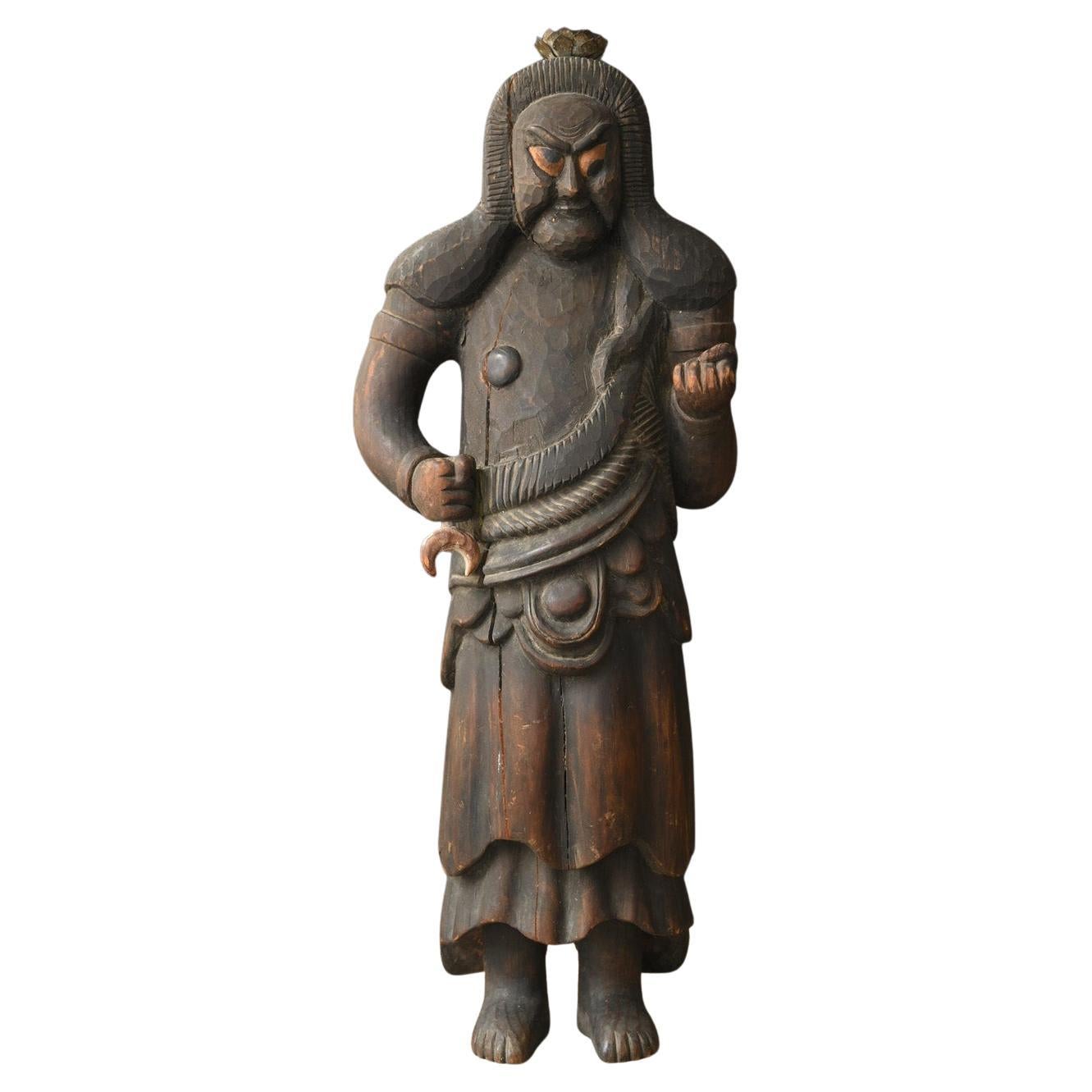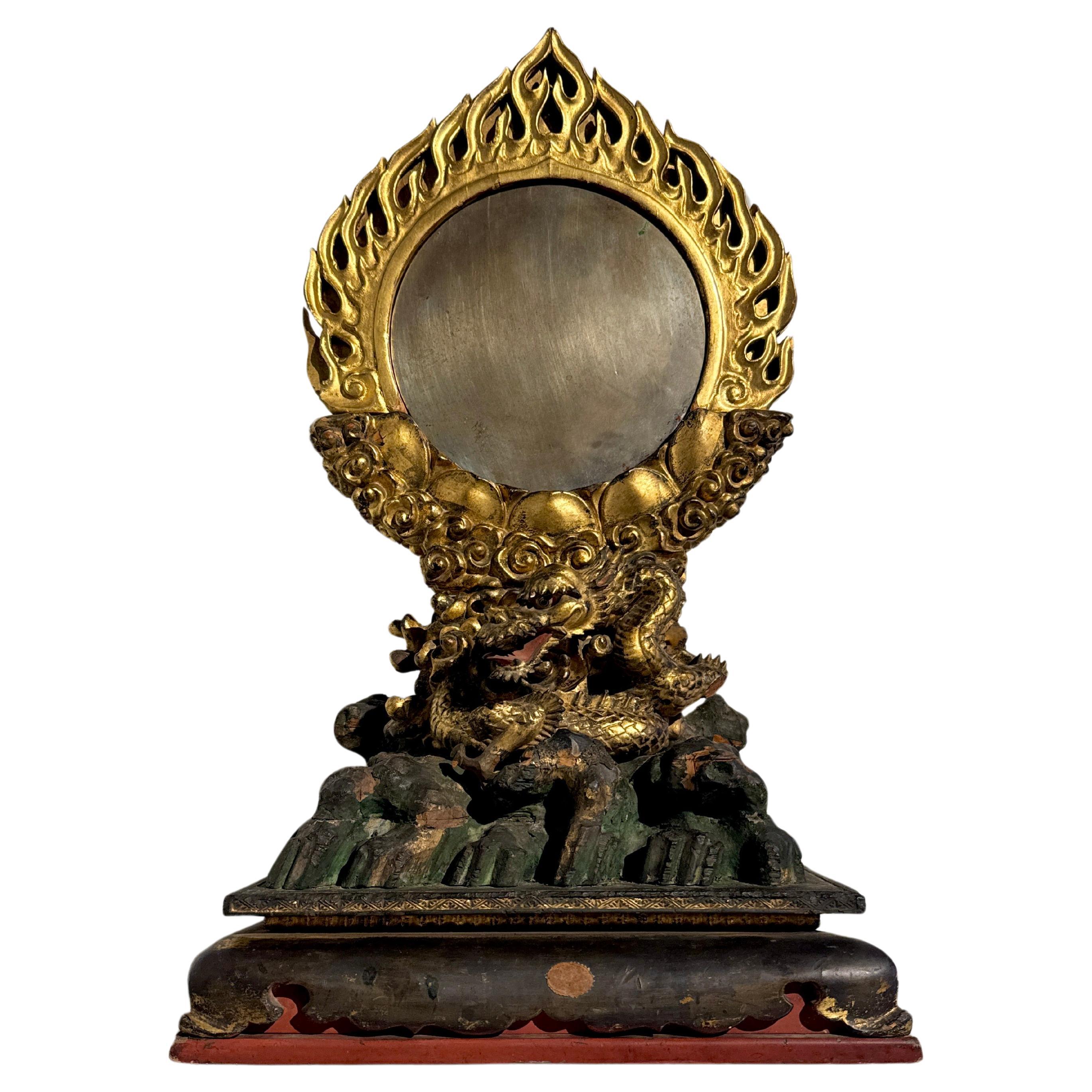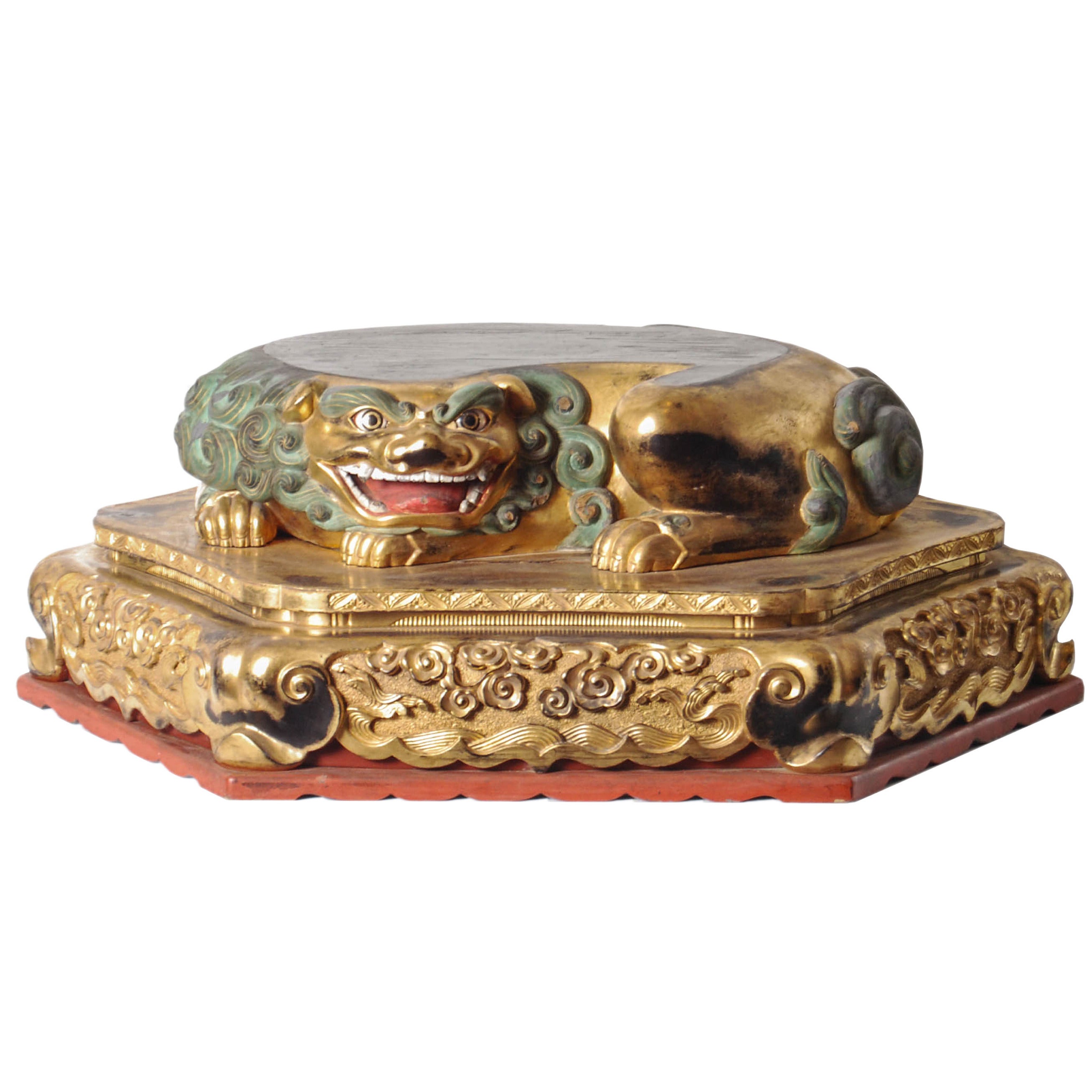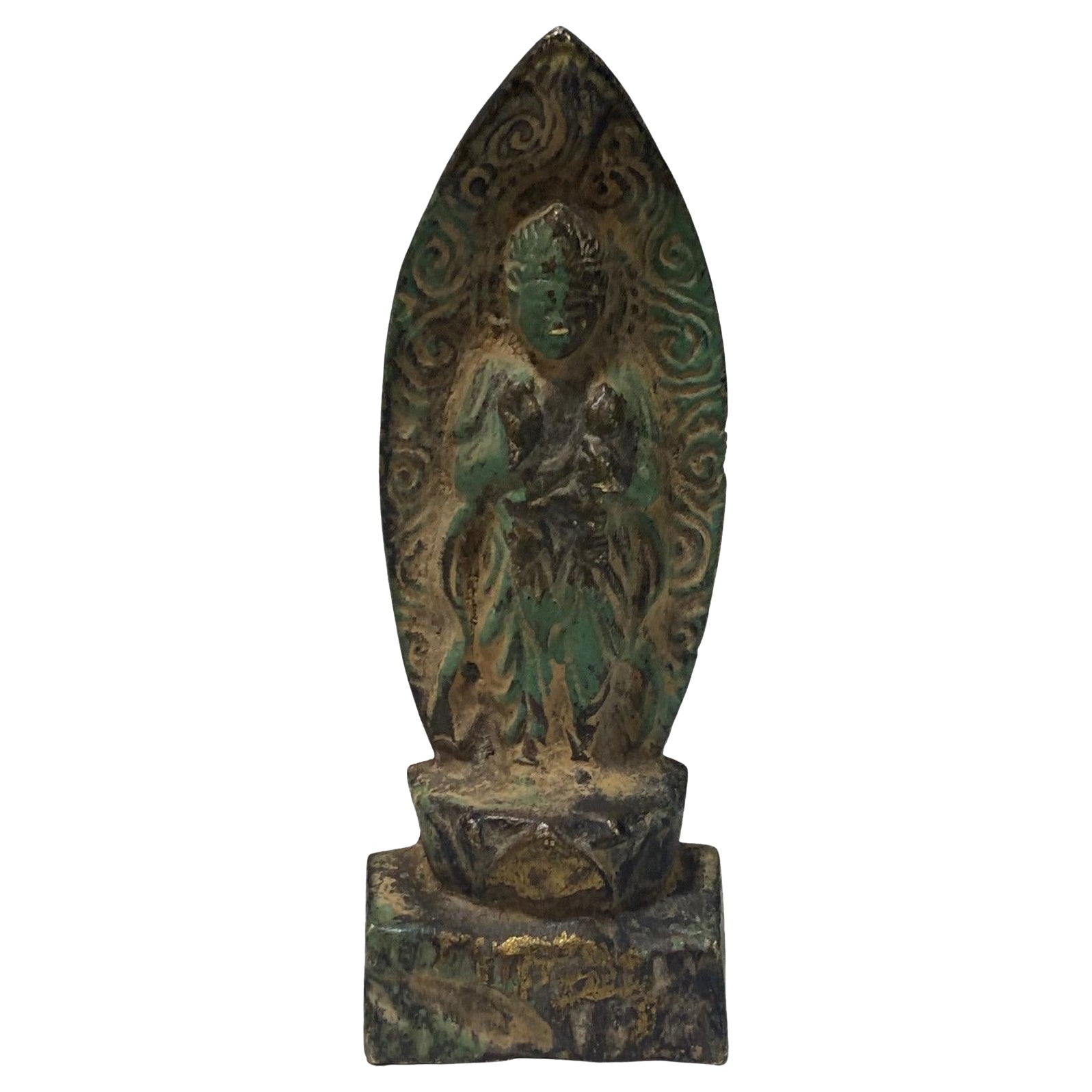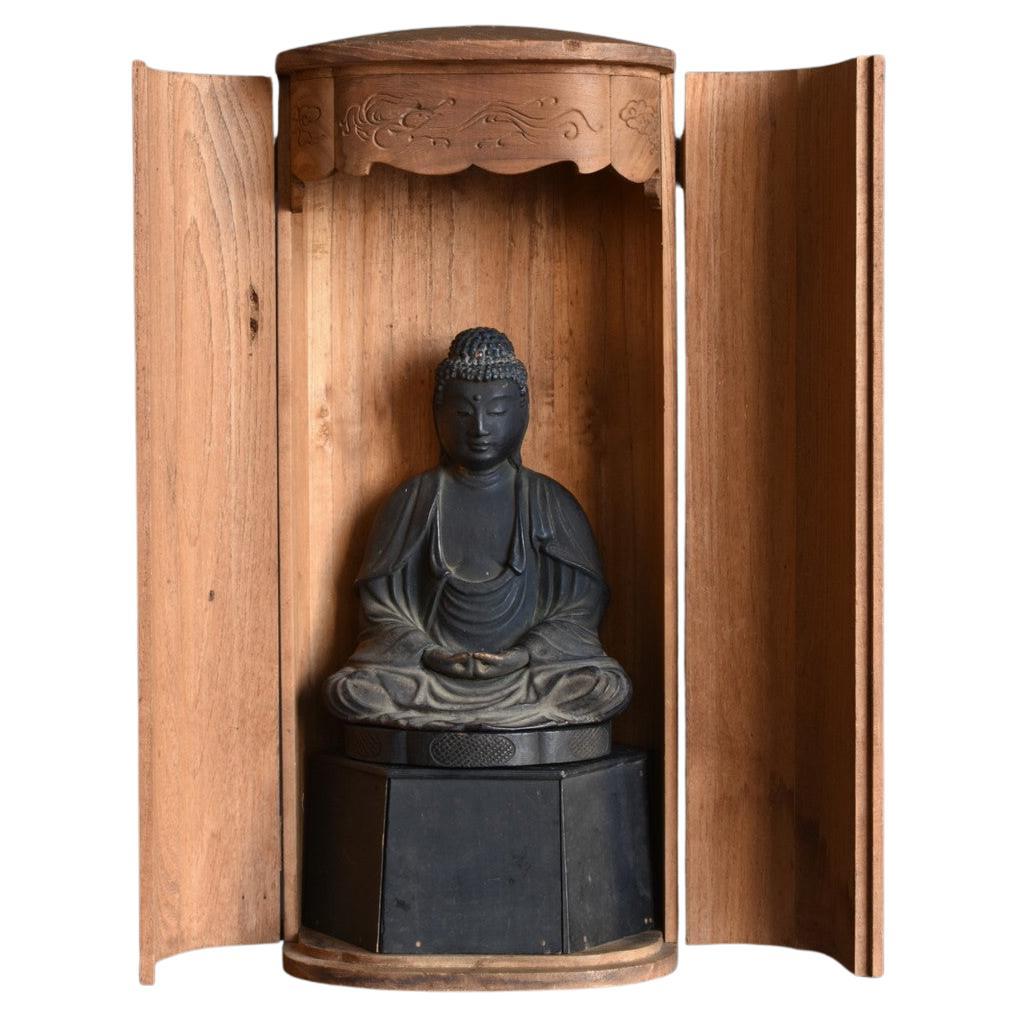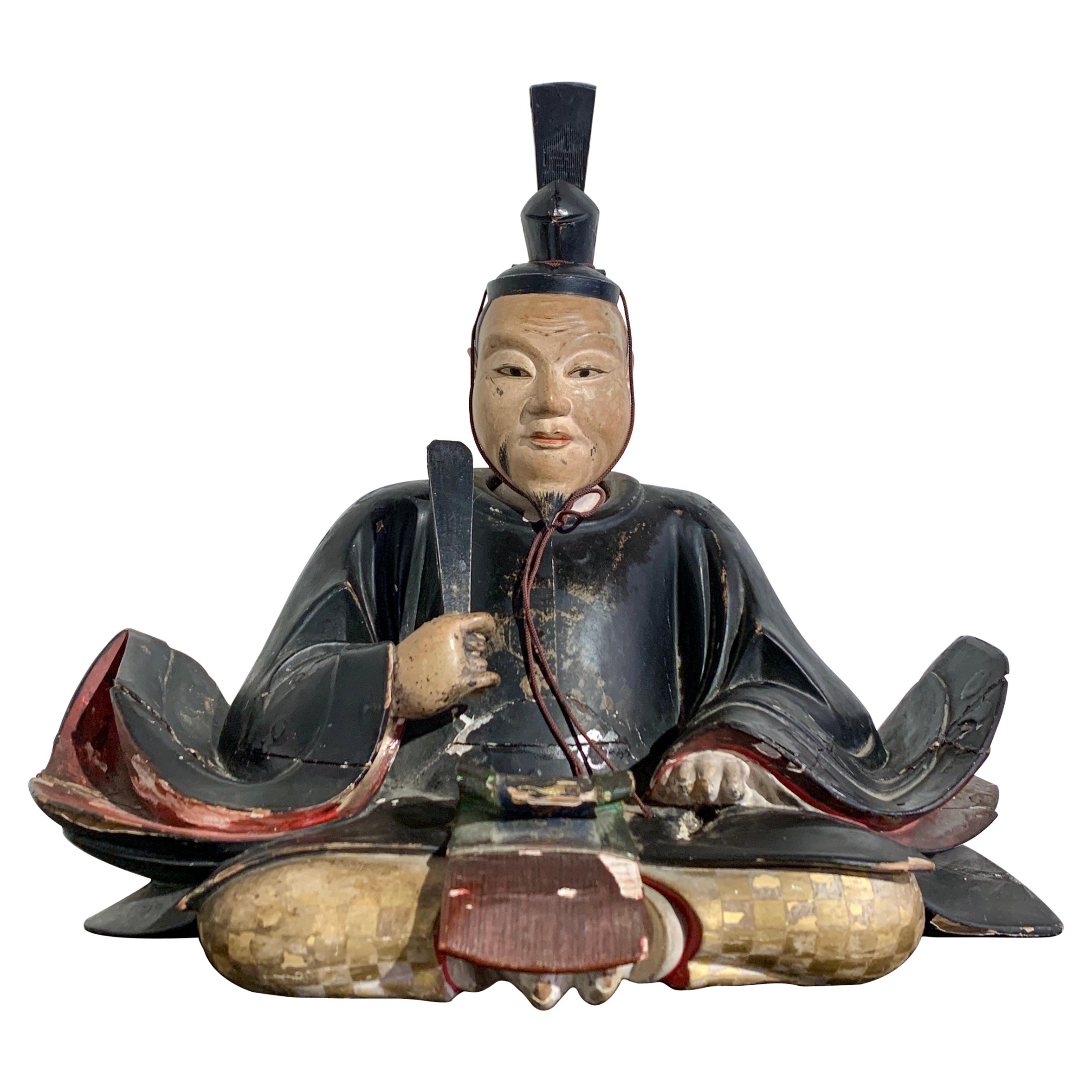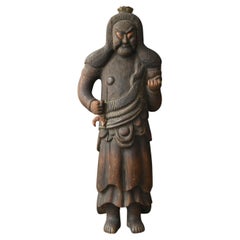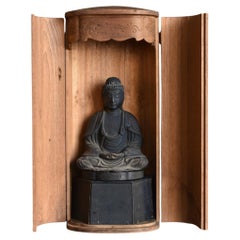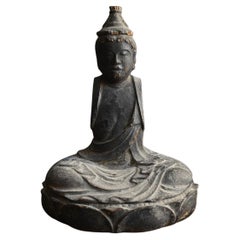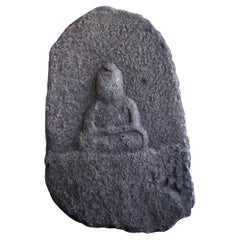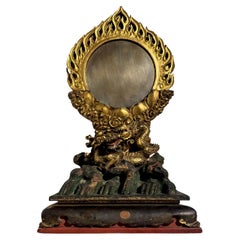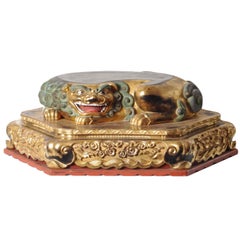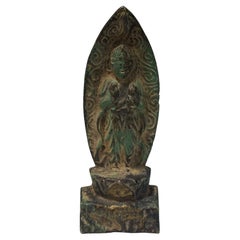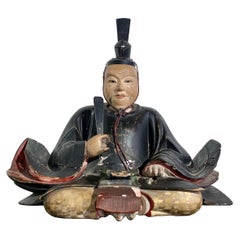Items Similar to Japanese antique Buddhist statues/[Ten Kings statues]/Edo period/18-19th century
Video Loading
Want more images or videos?
Request additional images or videos from the seller
1 of 22
Japanese antique Buddhist statues/[Ten Kings statues]/Edo period/18-19th century
$1,000
£758.78
€867.59
CA$1,396.73
A$1,552.97
CHF 810.88
MX$18,903.46
NOK 10,346.43
SEK 9,694.11
DKK 6,475.01
Shipping
Retrieving quote...The 1stDibs Promise:
Authenticity Guarantee,
Money-Back Guarantee,
24-Hour Cancellation
About the Item
This wooden Buddhist statue (made from cypress wood) is thought to have been made in the Edo period, probably around the 18th or 19th century. It is one of the types of statues known as "Ten Kings Statues."
Ten Kings Statues are statues of the ten kings that the deceased are said to meet in the afterlife, based on Buddhist teachings. It is believed that after death, a person is judged every seven days from the seventh day after death, and that their reincarnation destination is decided by the 77th day (49th day). The Ten Kings are like judges, examining the deceased's actions in life and ultimately deciding whether they will go to paradise or hell.
Many such Ten Kings statues remain, especially in the Tohoku region and the Hokuriku region, including Niigata Prefecture. Although the specific place of production of this work has not yet been identified, it is assumed to belong to the same lineage as the Buddhist statues enshrined in the areas mentioned above. In fact, similar works are published in art books, and reference materials are included as examples.
In the past, each village or settlement had a small hall called a "Jizo-do" where these statues of the Ten Kings were enshrined along with Jizo Bodhisattva. Jizo Bodhisattva is said to save all living beings from all hardships and is widely worshipped.
The Jizo-do was not only a place of worship, but also a place where villagers gathered to interact. It was a mysterious space where the "other world" and the "this world" intersected, and the statues of the Ten Kings were symbols of facing the inevitable death. Inside the hall, there are statues of "undressing old women" who strip the dead, and they are characterized by their expressions that give a sense of humor and relief amid the fear.
This statue also retains a cheerful and gentle expression amid the sternness, and it is clear that it was a presence that eased the anxiety and fear that people at that time had in the face of death. The statues of the Ten Kings, which remain in large numbers in settlements in Tohoku and Niigata, are Buddhist statues that were associated with the earnest prayers of such villagers, and can be said to have played a central role in folk beliefs.
Currently, many Buddhist statues are housed in museums, and beautiful and majestic statues such as Shaka Nyorai, Kannon Bodhisattva, and Jizo Bodhisattva are attracting attention, but the existence of these simple Buddhist statues that are closely related to everyday life is not yet fully known. However, these Buddhist statues are proof of the faith that is deeply rooted in the lives of the people, and they have the power to speak to the heart even in modern times.
In addition, since the bottom of this work was damaged, probably due to corrosion or insect damage, part of the statue was cut out and placed on a new pedestal and reconstructed. As a result, there are slight differences in the wood quality of the pedestal and the main body, but the overall unity and stability are maintained, and it has an appearance that quietly blends in with modern spaces.
These Ten Kings statues, standing quietly, go beyond being mere ornaments and bring spirituality and a story to the space. By placing them in spaces where light and shadow intersect, such as the entrance, the tokonoma alcove, or a corner of a study, you will be able to feel the presence of prayer that transcends time.
Size: Width 26cm x Depth 11.5cm x Height 38cm
Weight: 1.35kg
Product code: SC128
[We are a specialized team dealing in antiques and vintage items, comprised of stores based on three distinct brands. While focusing on Japanese items, we also offer a carefully curated selection of attractive goods from around the world—each evoking the culture and history of its country of origin.
Unlike the traditional Japanese antique furniture and art that have been appreciated overseas until now, we shine a light on the tools and furniture that were used for many years in ordinary Japanese homes and farmhouses. These objects have gained a unique charm over time, their beauty deepened by the history accumulated through daily life. In today’s world, however, many of these precious items are discarded during home demolitions. We are committed to reassessing their value and passing them on to future generations.
Drawing from our extensive experience—having seen tens of thousands of items through direct purchases, markets, and auction houses—we carefully select and present only the most captivating pieces. This is something made possible only through the years of knowledge and expertise we have cultivated.
Rather than focusing on the widely known facets of Japanese art and culture, we highlight the subtle beauty born from the everyday life of common people. It is this rediscovered beauty, steeped in history, that we strive to share with the world.]
- Dimensions:Height: 14.97 in (38 cm)Width: 10.24 in (26 cm)Depth: 4.53 in (11.5 cm)
- Style:Edo (Of the Period)
- Materials and Techniques:
- Place of Origin:
- Period:
- Date of Manufacture:18-19th century
- Condition:Repaired: Probably due to corrosion and insect damage, the bottom of the body was in poor condition, so part of the body was cut off and placed on a different base.
- Seller Location:Sammu-shi, JP
- Reference Number:1stDibs: LU5487246008652
About the Seller
5.0
Gold Seller
Premium sellers maintaining a 4.3+ rating and 24-hour response times
Established in 2015
1stDibs seller since 2020
1,604 sales on 1stDibs
Typical response time: 6 hours
- ShippingRetrieving quote...Shipping from: senzoku, Japan
- Return Policy
Authenticity Guarantee
In the unlikely event there’s an issue with an item’s authenticity, contact us within 1 year for a full refund. DetailsMoney-Back Guarantee
If your item is not as described, is damaged in transit, or does not arrive, contact us within 7 days for a full refund. Details24-Hour Cancellation
You have a 24-hour grace period in which to reconsider your purchase, with no questions asked.Vetted Professional Sellers
Our world-class sellers must adhere to strict standards for service and quality, maintaining the integrity of our listings.Price-Match Guarantee
If you find that a seller listed the same item for a lower price elsewhere, we’ll match it.Trusted Global Delivery
Our best-in-class carrier network provides specialized shipping options worldwide, including custom delivery.More From This Seller
View AllJapanese antique wooden Buddha statue/Acala/Late Edo period/19th century
Located in Sammu-shi, Chiba
This is a statue of Fudō Myōō (Acala), believed to have been created in Japan during the late Edo period, specifically in the year 1804. On the back, there is an ink inscription that...
Category
Antique 19th Century Japanese Edo Sculptures and Carvings
Materials
Wood
Antique Japanese wooden Buddha statue/Edo period/seated Tathagata statue
Located in Sammu-shi, Chiba
This is a wooden Buddha statue made around the Edo period (1603-1868).
It is likely to be Amida Nyorai, the highest-ranking Buddha statue, which is an enlightened being.
This Buddha ...
Category
Antique 18th Century Japanese Edo Sculptures and Carvings
Materials
Cypress
Japanese antique wooden Buddha statue / Edo period / 1600 to 1800
Located in Sammu-shi, Chiba
This wooden statue is a relic from Japan's Edo period, and within it lies a deep history that transcends time. Originally, it was part of a more intricate statue, likely adorned with...
Category
Antique 17th Century Japanese Edo Sculptures and Carvings
Materials
Cypress
Edo Period Stone Buddha/1600’s/Japanese Antique Buddha Statue/Garden Ornament
Located in Sammu-shi, Chiba
This stone Buddha sculpture, believed to date back to the early Edo period or earlier, depicts Jizo Bosatsu in a seated pose.
Crafted from granite, it showcases the natural effects ...
Category
Antique Early 17th Century Japanese Edo Sculptures and Carvings
Materials
Stone
Wooden Buddha statues from the Edo period in Japan/1800-1868/Late Edo period
Located in Sammu-shi, Chiba
This wooden Buddhist statue was made in the late to late Edo period.
It is thought to be a statue of Kannon Bodhisattva.
It was originally placed in a shrine and was painted, but the...
Category
Antique 19th Century Japanese Edo Sculptures and Carvings
Materials
Cypress
Japanese antique wall-hanging wooden Buddha statue/Edo period/1603-1868/Wabisabi
Located in Sammu-shi, Chiba
This is a wooden Buddha statue made around the Edo period in Japan.
Although it is a small Buddha statue, it has a strong presence and is beautiful.
Originally, there was a wooden pe...
Category
Antique 18th Century Japanese Edo Sculptures and Carvings
Materials
Cypress
You May Also Like
Japanese Buddhist Mirror and Dragon Stand, Edo Period, early 19th c, Japan
Located in Austin, TX
A powerful and rare Japanese Buddhist "sacred" mirror and stand, Edo Period, late 18th or early 19th century, Japan.
The bronze mirror is housed in a two part gilt wood and lacquer ...
Category
Antique Early 19th Century Japanese Edo Sculptures and Carvings
Materials
Bronze
Rare Buddhist Carved Base for a Statue, Edo Period, 17th Century
Located in Prahran, Victoria
Rare and unusual hexagonal Buddhist base for a statue with a recumbent shi-shi (guardian lion dog), gilded and carved with inset glass eyes and painted with mineral pigments.
Most likely the base to a sculpture of Monju Bosatsu...
Category
Antique Mid-17th Century Japanese Edo Animal Sculptures
Materials
Wood
Japanese Bronze Edo Period Buddhist Temple Shrine Buddha Statue Amulet Sculpture
Located in Studio City, CA
A gorgeous Japanese bronze temple shrine Buddha. The small piece has a beautiful aged patina and a wonderful, surprisingly hefty feel to it when held in...
Category
Antique Early 19th Century Japanese Edo Sculptures and Carvings
Materials
Bronze
Japanese Carved and Lacquered Wood Shogun, Edo Period, 19th Century, Japan
Located in Austin, TX
An unusual Japanese carved wood, lacquer, and gilt decorated portrait sculpture of a shogun, Edo Period, early 19th century, Japan.
The unidentified shogun (possibly Tokugawa Iey...
Category
Antique Mid-19th Century Japanese Edo Sculptures and Carvings
Materials
Wood, Lacquer
Antique 18th Century Japanese Edo Gilt Bronze Kannon Buddha Statue Figure 1750
Located in Portland, OR
A fine & rare large antique 18th century Japanese Edo period gilt bronze Kannon statue, circa 1750.
This finely cast gilded bronze statue represents the Japanese Bodhisattva of Merc...
Category
Antique 18th Century Japanese Edo Sculptures and Carvings
Materials
Bronze
Japanese Standing Gilt Buddha, Amida Nyorai, Edo Period, 18th century, Japan
Located in Austin, TX
An exquisite Japanese carved hinoki and gilt lacquered standing figure of Amida Nyorai, Amitabha Buddha, Edo Period, 18th century, Japan.
The spectacular fully gold gilt figure of A...
Category
Antique 18th Century Japanese Edo Sculptures and Carvings
Materials
Rock Crystal
More Ways To Browse
Burmese Papier Mache Buddha
Jade Foo Dog Sculpture
Sotaro Saegusa
Antique Ivory Netsukes
Chiang Saen Buddha
Gosho Doll
Hand Carved Wooden Balinese Busts
Iki Ningyo
Khmer Lingam
Yakushi Nyorai
Ceremonial Asian Axe
Japanese Antique Tree Penis
Pi Xiu
Shinto Bell
Stone And Iron Bonsai
Sumba Statues
Vintage Indian Wooden Printing Blocks
Burmese Chess Set
